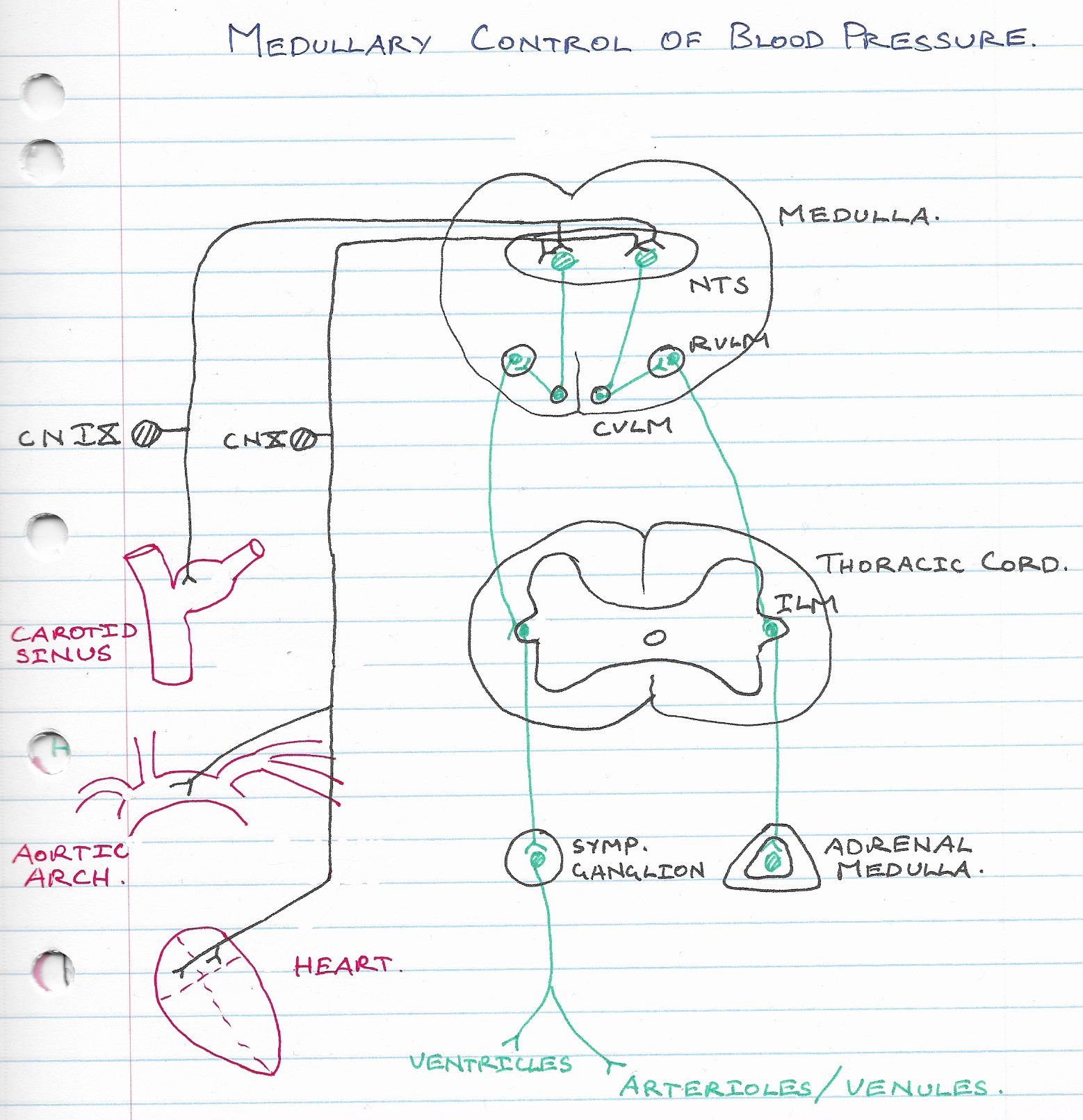Difference between revisions of "AUTOREGULATION-MEDULLARY CONTROL"
(Imported from text file) |
(Imported from text file) |
||
| Line 16: | Line 16: | ||
==Reference(s)== | ==Reference(s)== | ||
Barrett, K.E., Barman, S.M | Barrett, K.E., Barman, S.M., Brooks, H.L., X, J. and Ganong, W.F. (2019). Ganong’s review of medical physiology. 26th ed. New York: Mcgraw-Hill Education | ||
[[Category:Autoregulation]] | [[Category:Autoregulation]] | ||
[[Category:Physiology]] | [[Category:Physiology]] | ||
Latest revision as of 02:30, 21 March 2023
SUMMARY
1. Nucleus Tractus Solitarius (NTS) is the site of termination of baroreceptor afferent fibers.
2. Excitatory input to sympathetic nerves: from rostral ventrolateral medulla (RVLM) AKA vasomotor area.
3. Fibers descend to the thoraco-lumbar intermedeolateral grey column (thoraco-lumbar outflow/ILM).
CONTROL OF RVLM
4. Arterial baroreceptors, aortic & carotid chemoreceptors, fibers from other parts of nervous system.
5. Descending tracts from limbic cortex that relay in the hypothalamus.
6. Inflation of the lungs causes vasodilatation & decrease in BP via vagal afferents that inhibit vasomotor discharge.
7. Pain causes a rise in BP via reticular formation.

Image: Dr. Appukutty Manickam.
Reference(s)
Barrett, K.E., Barman, S.M., Brooks, H.L., X, J. and Ganong, W.F. (2019). Ganong’s review of medical physiology. 26th ed. New York: Mcgraw-Hill Education